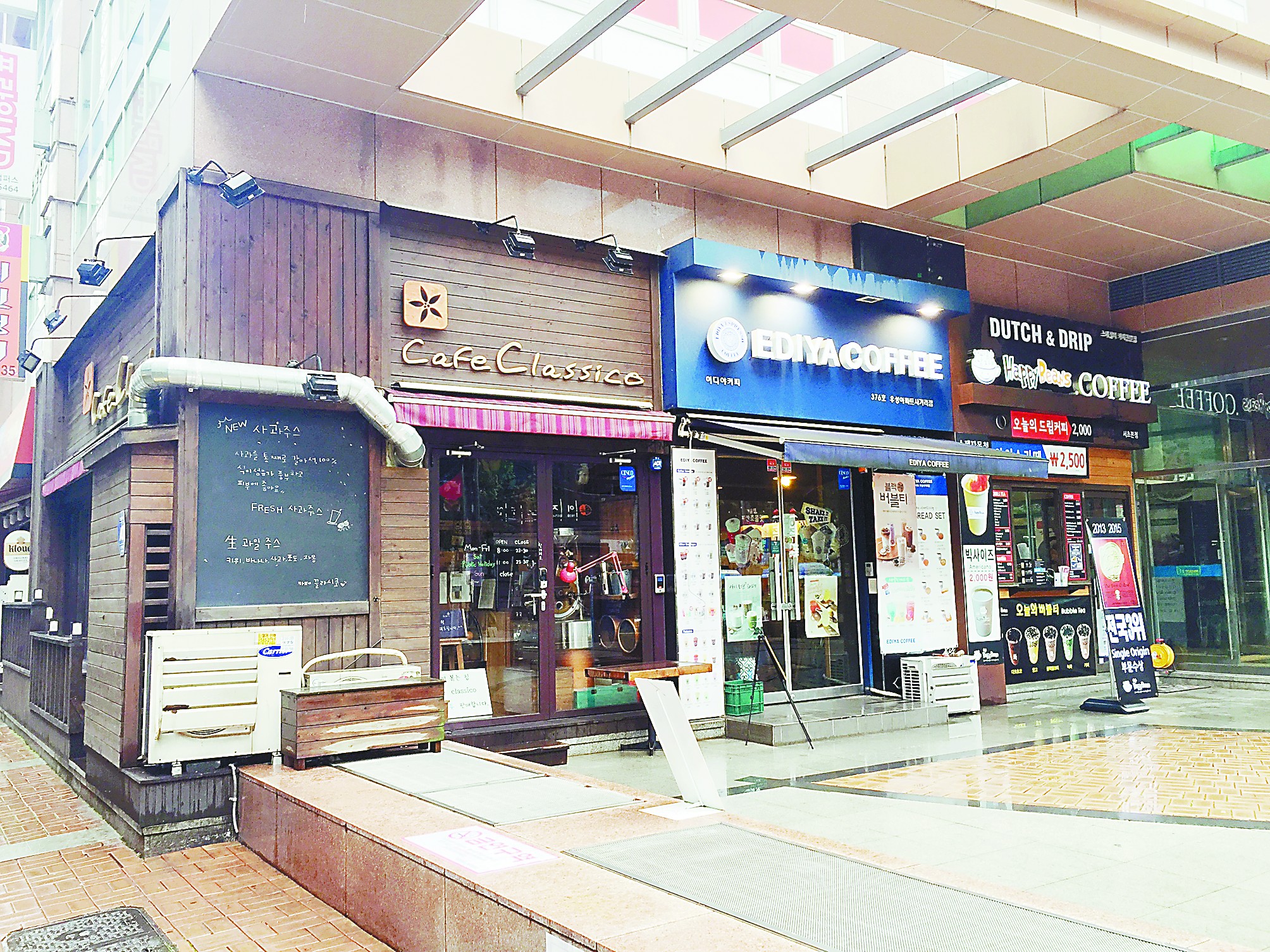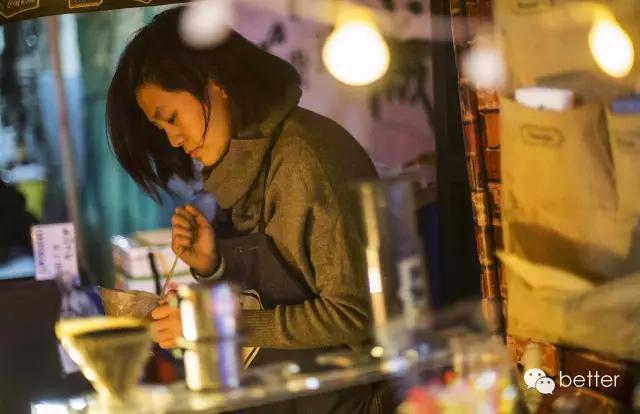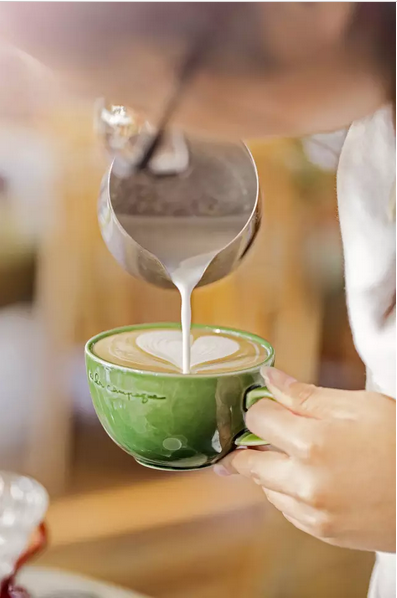South Koreans are poisoned by coffee.
Source: Global Times
[Global Times Special Correspondent Cui Jietong to South Korea]"Cui, look!" Looking along the finger of South Korea's "East Asia Daily" reporter Zhu Shenghe, the reporter saw that three coffee shops were close together (as pictured), and the lights reflected the rainy night more brightly. "There are so many coffee shops, we are all poisoned!" he said.

The place where we stood was a small square near Gangnam City Plaza Hotel, Seocho-gu, Seoul. Walking down the streets of Seoul, just look around and you will find at least one coffee shop. According to a survey published by the International Business Times in 2014, coffee has surpassed kimchi, South Korea's national dish, as the country's most consumed food. On average, Koreans drink coffee 12.2 times a week, kimchi, which has been a Korean food since the 16th century, eats an average of 11.9 times a week, and rice 6.9 times a week.
"If you stay in Seoul for a few more days, you'll find that during lunch, colleagues in the company basically don't talk to each other. After lunch, they get up and leave without saying a word. Then they go straight to the coffee shop, where they chat and discuss things. This is a tacit understanding and a habit." Li Meilian, who studied in Seoul, told the Global Times reporter,"When I first came to Seoul a few years ago, I didn't drink coffee. I watched others drink coffee, but you couldn't melt it without drinking coffee. Now I'm drinking too."
Coffee was first introduced to Korea in the late 19th century and became popular during Japan's colonial rule of the Korean Peninsula. American soldiers brought instant coffee to Korea during the Korean War in the 1950s, which made coffee more popular. However, coffee shops blossomed into a culture only in the last 20 years. American coffee chain giant Starbucks opened its first store in Seoul in 1999 at South Korea's prestigious Ewha Women's University, and by 2014 it had nearly 300 stores. Daniel Schweikendieck, a professor at Sungkyunkwan University in South Korea, commented that "walking down the street with a Starbucks cup becomes a status symbol, like carrying a designer bag on your arm." Coffee has become a class status indicator in South Korea, leading to the emergence of cultural phenomena such as "bean paste girls," girls who choose not to eat meat in order to save money for luxury goods, because bean paste is a very cheap food in Korea. In the 2012 Korean divine song Gangnam Style, the singer ironically sang: Where is the beautiful girl who knows how to enjoy a cup of coffee freedom?
Want to live in Seoul? Thirteen things you have to get used to." Coffee shops rank ahead of kimchi, metal chopsticks, soju, sitting on the floor and bowing, although the latter have long been South Korea's image symbol in the world's impression, on the list of seoulist.com, which specializes in promoting Seoul to foreigners. In fact, South Korea has included coffee as part of its culture. In many familiar Korean dramas, cafes can be seen everywhere. Some Korean coffee chains have opened their stores to Paris, New York, Beijing and other parts of the world by taking advantage of the "Korean Wave". It is understood that there are 284 Starbucks stores in Seoul, ranking first in the world, which dwarfs New York in the United States. No one knows how long South Korea's coffee craze will last. Fierce market competition, many Korean coffee shop owners began to choose low-cost strategy, the market increasingly fierce fight.
Important Notice :
前街咖啡 FrontStreet Coffee has moved to new addredd:
FrontStreet Coffee Address: 315,Donghua East Road,GuangZhou
Tel:020 38364473
- Prev

Across the cedar road full of gears, the lonely man had a cup of coffee
This society is like a perpetual motion machine, and we are all just one of the gears. The winter cedar road does not have the hustle and bustle of summer. At 08:30 in the evening, only a few diners of Bali lobster ate midnight snacks. The glasses Restaurant next door ended its busy dinner, and the messengers and cooks played with their cell phones in the kitchen. Between the two restaurants is a residential aisle about five meters wide, filled with stewed meat and simmering.
- Next

City Commonweal Cafe settled in Wuxi Taosha Lane
The urban commonweal cafe, a social charity project designed to help the disabled find jobs and promote the cause of helping the disabled through project profits, opened its doors in Taosha Lane yesterday. City leader Liu Xia and others unveiled the cafe. The city commonweal cafe is co-sponsored by Chengfa Group, Municipal disabled Persons' Federation and other units, with an investment of 150000 yuan to help disabled friends realize their employment dreams in the physical form of the coffee shop project. Item
Related
- Is espresso stored overnight in the refrigerator harmful to your body? Is frozen coffee better than freshly ground coffee?
- What parameters and proportions of water temperature should be used to grind and brew fresh coffee beans? Why can't I drink freshly roasted coffee right away?
- Customers have "changed" Manner's new products! Shop assistant: Please don't mess around!
- Remove sockets in customer areas at Starbucks stores?! Netizen: I won't go if I really tear it down
- What is the difference between the taste steps of sun-dried coffee and washed coffee? Why is sun-cured coffee sweeter and washed coffee sour?
- The recipe for salty grapefruit dirty is revealed! Coffee Festival salty grapefruit dirty coffee making materials parameters ratio milk share!
- How about the flavor of Sunlight 74158 at Sidamo Banshaha Mathieu Processing Factory in Ethiopia? 74158 Share the proportion of coffee brewing parameters!
- What effect does Italian American coffee with filter paper have? Will coffee taste better if it is put on filter paper at the bottom of the powder bowl?
- What is the color difference in coffee beans? What are the characteristics of honey processed coffee beans? Why are the anaerobically treated coffee beans uneven in color?
- How does novice Xiaobai quickly get started and make coffee? Newbies learn to make coffee by hand and share the specific steps and process process!

